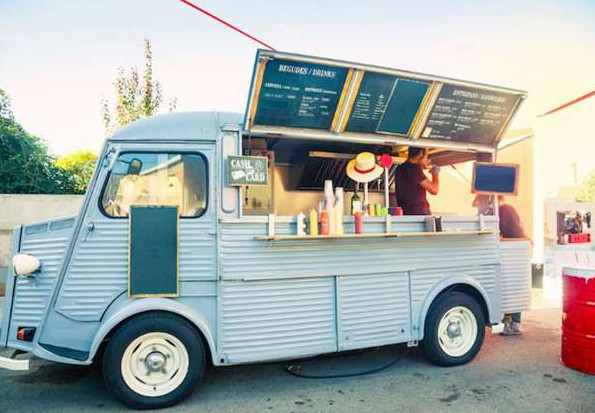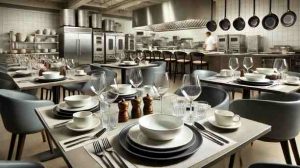Food Trucks – What to Consider When Choosing One?

Have you always dreamed of running a vintage-looking food truck? Street food has always been attractive to individuals, particularly during music festivals and similar events.
Catering truck owners have an alternative to stay put or hit the road after spending a short time at a particular location. Regardless of your decision, having the necessary licenses and permits is a must in order to avoid problems with the law.
Nowadays, there are catering vehicle manufacturers, such as Reward Catering, providing purpose-built bespoke food trucks. The design of these vehicles can be customized to the style preferences of buyers in order for each model to have an authentic look.
Follow the tips below when choosing a catering truck.
Consider Licenses And Permits
Even though bureaucracy is the last thing on the mind of buyers, it’s an aspect worth considering prior to making a purchase. In order for a person to run such a business while adhering to the law, he/she is supposed to obtain the required licenses and permits issued by local governments.
Food truck regulations vary across states, which means you have to check local laws before making an investment. Local directives involve parking permits, proximity restrictions, regulations concerning staff, etc. Unless the owner of the vehicle abides by the laws in his/her province, he/she will be forced to pay hefty fines or redesign the wagon.
Select The Right Vehicle
Prior to coming up with the perfect design for your catering truck, make sure to pick the right vehicle. The first factor to take into account is the size of the truck. Large models provide more space for owners to fit their equipment, whereas small models are more convenient to park and maneuver. The look of the vehicle is supposed to correspond with your brand in order to appeal to customers.
Another aspect worth the attention of buyers is the type of fuel. Individuals are supposed to choose between electric vehicles and those running on fuel. The former is more budget-friendly but useless if there is no charging station nearby. The latter is not as cost-effective, but these can be used in both urban and remote areas.
Choose A Power Source
Once you’ve chosen a vehicle, the following aspect on your list should be the source of power. In order to power up your food truck, make sure to consider the overall voltage of the equipment, as well as the emission guidelines in your local region.
For instance, generators are available in an array of sizes so as to fit the size of different vehicles. Since you will be using a significant amount of power for the oven, fryers, freezer, fridge, lights, and other appliances, it’s important to select a high-quality generator. In order to minimize the amount of carbon monoxide and heat generators produce, these devices should be installed professionally and provided with ventilation. Visit this website for some handy tips on using a generator.
Instead of using a generator to run your food truck, you can opt for a more cost-effective investment, such as solar panels. Although solar panels are costlier to purchase than generators, the return on investment is much higher. These panels are best placed on the roofs of catering trucks without ruining their look.
Another power source alternative is the use of fuel-powered generators, which are the least environmentally-friendly choice. These generators are either connected to a separate tank or the fuel tank of the vehicle. The latter alternative is less restrictive regarding space.

Consider The Interior Design
Interior design is the most crucial factor to have in mind when shopping for a food truck, as it should be functional for the staff and attractive in the eyes of passers-by. A myriad of catering truck designers is waiting to assist you in personalizing the vehicle to the way you have always imagined it.
The kitchen layout is of essential importance due to the effect it has on the efficiency and safety of the personnel. Make sure the floors in the kitchen are made from inflammable, slip-resistant materials to prevent accidents. It is vital for the vehicle to be ventilated properly by using a roof fan and choosing a model with multiple windows.
In order for the staff to work without any obstructions, the kitchen blueprint should include sufficient room for them to move around. Additionally, staff members are supposed to access the inventory easily so as not to waste time looking for the necessary ingredients. The blueprint should also feature emergency exits, essential in the event of an accident.
The best way to come up with an idea for a food truck design is by visualizing the workflow, from the moment ingredients are taken out of the fridge to when meals are prepared and served to customers. It’s paramount for catering truck kitchens to have a refrigeration and dry storage area, food preparation area, stovetops, grills, fryers, ovens, serving area, and clean-up station.
The service window is of the utmost importance when choosing the best design, as it’s the only place where customers and staff members come in contact. Make sure there is enough counter space for customers to feel comfortable while waiting for their meals. The size of the counter space is best determined by considering the type of meals you’ll be serving.
Last but not least, ambiance plays a significant role in the process of attracting passers-by. It also has a tremendous effect on the experience of customers purchasing food from your truck. Make sure there is an awning right over the service counter in order to protect customers from the weather elements and make them feel cozy.
The exterior look of the vehicle should be decorated in a way it’s impossible to ignore by individuals passing by it. You can use colorful lights and boards to make the vehicle stunning and irresistible to passers-by.
The Bottom Line
Selecting the right vehicle and designing it to suit your needs is all you need to become a food truck owner!







